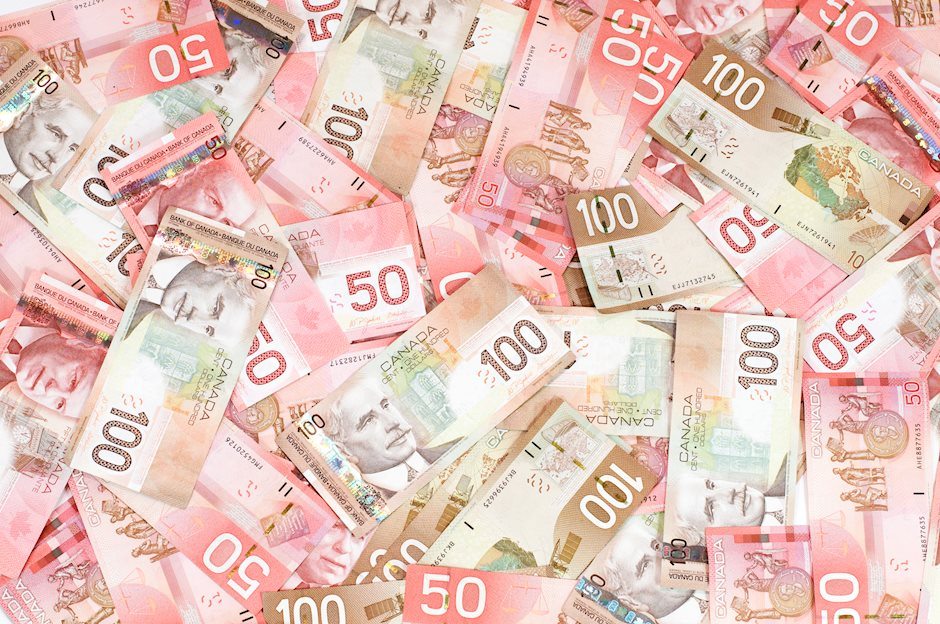USD/CAD sees more downside below 1.3500 as Oil prices rally
- USD/CAD slides further to near 1.3500 amid a strong Oil price rally.
- The Fed is widely anticipated to start reducing interest rates in September.
- US Durable Goods Orders grew at a robust pace of almost 10% in July.

The USD/CAD pair extends its downside to near the psychological support of 1.3500 in Monday’s New York session. The Loonie asset weakens as a stellar upside move in the Oil price has strengthened the Canadian Dollar (CAD). The Oil price on NYMEX has gained more than 7% since Thursday amid escalating tensions between Iran and Israel in the Middle East. Growing tensions in the Middle East have prompted fears of Oil supply disruptions.
Meanwhile, the US Dollar (USD) delivered a mild recovery move after the release of the upbeat United States (US) Durable Goods Orders data for July. New orders for Durable Goods rose at a robust pace of 9.9% from the estimates of 4%. The economic data contracted significantly in June. The US Dollar Index (DXY), which tracks the Greenback’s value against six major currencies, recovers mildly after posting a fresh year-to-date (YTD) low of 100.53.
However, the near-term outlook of the US Dollar remains vulnerable as market participants appear to be confident about the Federal Reserve (Fed) to begin reducing interest rates from the September meeting.
The confidence of investors for Fed rate cuts in September has increased after Fed Chair Jerome Powell unambiguously said in his speech at the Jackson Hole (JH) Symposium on Friday, “The time has come for policy,” given that the central bank is now worried about growing risks to labor market. Powell added, " We will do everything we can to support a strong labor market." While the confidence of the Fed that price pressures sustainably return to banks’ target of 2% has increased.
For fresh cues on interest rates, investors will focus on the US core Personal Consumption Expenditure Price Index (PCE) data for July, which will be published on Friday. The underlying inflation data will significantly influence market expectations for the likely size of Fed interest rate cuts in September.
Canadian Dollar FAQs
The key factors driving the Canadian Dollar (CAD) are the level of interest rates set by the Bank of Canada (BoC), the price of Oil, Canada’s largest export, the health of its economy, inflation and the Trade Balance, which is the difference between the value of Canada’s exports versus its imports. Other factors include market sentiment – whether investors are taking on more risky assets (risk-on) or seeking safe-havens (risk-off) – with risk-on being CAD-positive. As its largest trading partner, the health of the US economy is also a key factor influencing the Canadian Dollar.
The Bank of Canada (BoC) has a significant influence on the Canadian Dollar by setting the level of interest rates that banks can lend to one another. This influences the level of interest rates for everyone. The main goal of the BoC is to maintain inflation at 1-3% by adjusting interest rates up or down. Relatively higher interest rates tend to be positive for the CAD. The Bank of Canada can also use quantitative easing and tightening to influence credit conditions, with the former CAD-negative and the latter CAD-positive.
The price of Oil is a key factor impacting the value of the Canadian Dollar. Petroleum is Canada’s biggest export, so Oil price tends to have an immediate impact on the CAD value. Generally, if Oil price rises CAD also goes up, as aggregate demand for the currency increases. The opposite is the case if the price of Oil falls. Higher Oil prices also tend to result in a greater likelihood of a positive Trade Balance, which is also supportive of the CAD.
While inflation had always traditionally been thought of as a negative factor for a currency since it lowers the value of money, the opposite has actually been the case in modern times with the relaxation of cross-border capital controls. Higher inflation tends to lead central banks to put up interest rates which attracts more capital inflows from global investors seeking a lucrative place to keep their money. This increases demand for the local currency, which in Canada’s case is the Canadian Dollar.
Macroeconomic data releases gauge the health of the economy and can have an impact on the Canadian Dollar. Indicators such as GDP, Manufacturing and Services PMIs, employment, and consumer sentiment surveys can all influence the direction of the CAD. A strong economy is good for the Canadian Dollar. Not only does it attract more foreign investment but it may encourage the Bank of Canada to put up interest rates, leading to a stronger currency. If economic data is weak, however, the CAD is likely to fall.
Author

Sagar Dua
FXStreet
Sagar Dua is associated with the financial markets from his college days. Along with pursuing post-graduation in Commerce in 2014, he started his markets training with chart analysis.

















